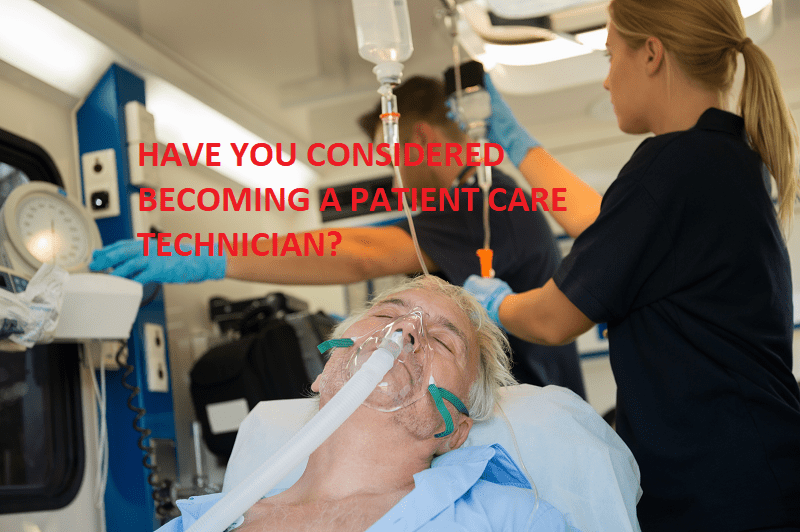Patient care technicians are said to be the new LPN’s. The reason for this has to do with the amount of responsibility that the hospital is willing to accept when hiring a patient care technician. More and more hospitals are using patient care technicians to assist in the advance care of patients. The patient care technician will draw blood, perform ECG’s, insert indwelling urinary catheters, IV’s and perhaps pass medications. This amount of responsibility given to the patient care technician can be overwhelming since formal training for this profession can range from a few weeks to a few months. Therefore, it is important that aspiring patient care technicians know where they plan to work prior to taking a class. Some hospitals may simply task the patient care technician with nurses aide skills. These skills include, feeding, bathing, bed making, showering, dressing and performing both oral and personal hygiene. In some cases, hospitals do not even let the patient care technician perform vital signs.
However, more and more hospitals see the need for competently trained patient care technicians. Those that know how to draw blood and perform EKG’s save the hospital extra dollars from hiring employees specific to each profession, since the patient care technician can do it all.
What goes into learning to become a patient care technician? First of all students must learn vital signs. Even if the student has prior knowledge of vital signs, they need to review the correct methodology in taking them. Taking vital signs does not just mean writing down or recording the values, but in the case of the patient care technician it means that they have to assess the vitals.
Patient Assessment is a skill that is learned through the process of what is known in the medical field as evidenced based practice. What this means is that there is valid reasoning associated with the way each vital sign is read and interpreted. A blood pressure of 120/80 may be a great blood pressure. Did you ever ask yourself why? It is a good blood pressure because it demonstrates that the atrioventricular valves and semi lunar valves are not under any constraints from disease process such as hypertension or cardiomyopathy. This blood pressure demonstrates that the pulse pressure, (systolic minus diastolic) is equal to 40. Which is then interpreted as normal. due to the fact that a very narrow pulse pressure or less than 40 may signify hypertension or a widely split pulse pressure may signify impedance to blood flow at the distal extremities.
Therefore, taking and recording a blood pressure has a lot more weight attached to it when looking at the physics behind the values. A patient care technician should know and recognize these signs and what they mean in conjunction with other vital signs. So students who have prior medical background should be excited to embark on a journey which will further their medical knowledge to obtain positions where there is a demand for their skills.

Nancy L. Kimmel obtained her PhD in Environmental Engineering in 2002, then went on to teach Physics and Mechanical Engineering at Lawrence Technological University, Henry Ford College and Oakland University. She obtained her Associate in Nursing from Henry Ford College and then went on to earn her Master Degree as a Family Nurse Practitioner and became Board Certified working as a licensed FNP in the State of Michigan. She then went on to Medical School where she is now in her 3rd year, and is also in the process of obtaining her Doctorate in Nursing Practice through Chamberlin University. She has authored the NET Study Guide, as well a several books on subjects of Math, ECG/EKG and Phlebotomy. She holds a patent on an Air Filter through the U.S. Patent Office.


